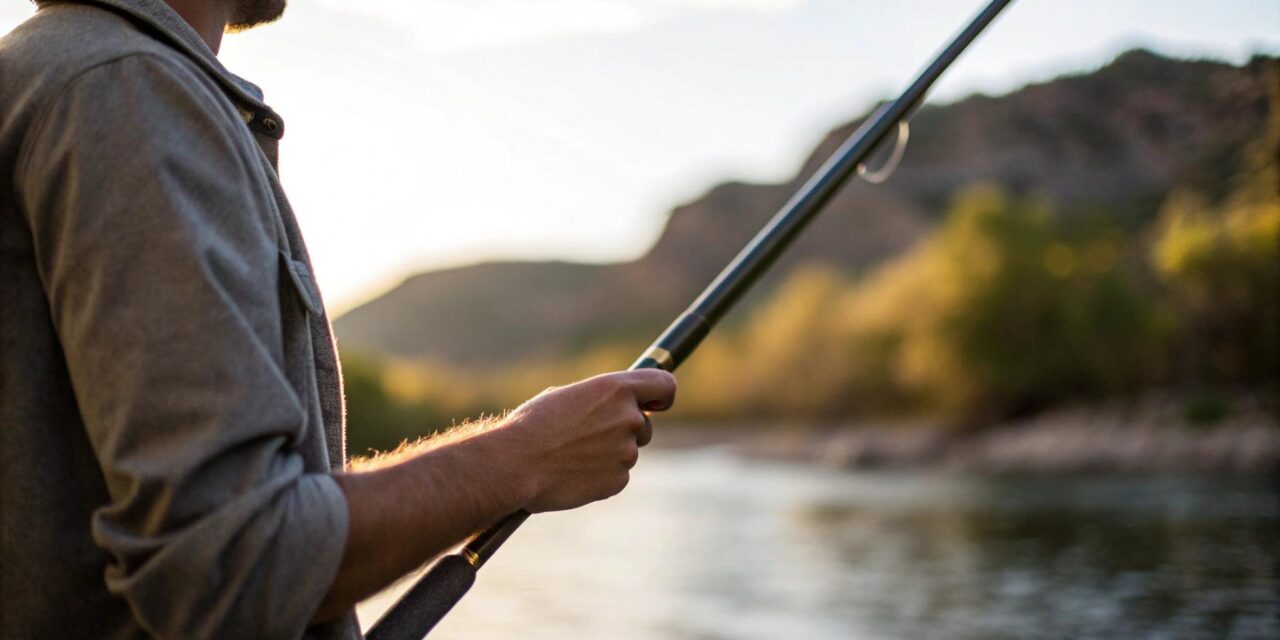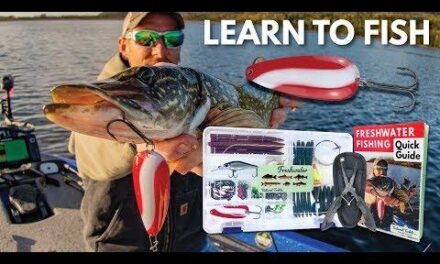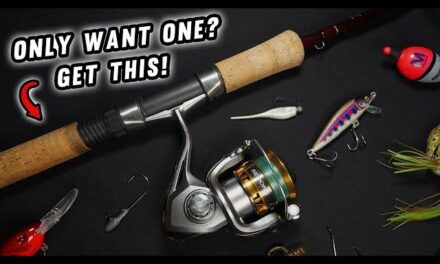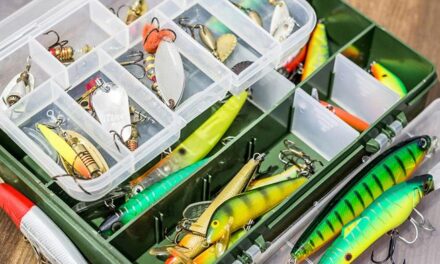How to Cast a Fishing Rod: Essential Techniques and Tips for Weekend Anglers
Estimated reading time: 8 minutes
Table of Contents
Key Takeaways
- Master proper stance and grip to ensure accurate and powerful casting.
- Practice the mechanics of casting with attention to timing and wrist movement.
- Learn essential fishing knots like the Improved Clinch and Palomar for secure bait attachment.
- Understand differences between fly fishing and spin fishing to select the right method.
- Adapt your fishing techniques for cold weather and nighttime conditions for better results.
The Basics of Casting a Fishing Rod
Proper Stance and Grip
To start with, let’s talk about your stance. A solid foundation is critical for effective casting. Stand with your feet shoulder-width apart, your body facing your target. This position enhances your balance and allows for maximum power during your cast.
Now, let’s discuss the grip. Hold the rod at waist level, parallel to the water. Make sure your grip is firm but comfortable. You should place your dominant hand on the handle while using your index finger to guide the line, ensuring you maintain control throughout the casting process. According to BassResource, a proper grip sets the stage for success.
Mechanics of the Cast
Once you have your stance and grip down, it’s time to focus on the mechanics of the cast. Here’s a step-by-step breakdown:
- Prepare the Line: Wind in the line until 6–8 inches (15–20 cm) of line hangs from the rod tip to your lure. This minimizes tangles and allows for a clean cast.
- Open the Bail: For spinning reels, open the bail. For baitcasters, depress the thumb bar to allow line release.
- Load the Rod: With your index finger holding the line against the rod, pull the rod back smoothly to create a bend. This “loading” of the rod is what generates power for your cast.
- Whip It Forward: Now, whip the rod forward while releasing the line at the appropriate moment. This requires timing; the line should leave the rod tip as your arm reaches the 10 o’clock position for maximum distance.
- Use Your Wrist: For accuracy, rely on your wrist rather than your entire arm and shoulder when casting. This will ensure more precise placement of your lure. According to Daiwa Fishing, wrist control improves casting accuracy.
Tips for Success
- Practice Quietly: Aim for your lure to land softly on the water’s surface; this is particularly important in clear waters where fish could be spooked.
- Utilize the Wind: Put slight tension on your line before the lure lands to guide it further.
- Match Gear to Weight: A rod and reel matched to your lure’s weight will provide easier, more accurate casting. For more guidance, visit BassResource.
Don’t forget the fishing knots! Before casting, ensure you’re using appropriate fishing knots for beginners to securely attach your bait.
Essential Fishing Knots for Beginners
Improved Clinch Knot
This is one of the most reliable knots for tying hooks, lures, and swivels. Here’s how to tie the Improved Clinch Knot:
- Thread the line through the eye of the hook or lure.
- Wrap the tag end around the standing line five to seven times.
- Pass the tag end back through the loop created near the eye.
- Finally, pull on both ends to tighten the knot, then trim excess line.
Palomar Knot
The Palomar Knot is another strong option, especially for beginners. It’s quick to tie and works well for most terminal tackle. Here’s how:
- Double about six inches of line and pass it through the eye of the hook or lure.
- Tie an overhand knot with the loop and tag end, but do not tighten completely.
- Pass the hook through the loop, then pull on both standing line and the tag end to tighten.
These fishing knots for beginners are not just easy to tie; they are also reliable, ensuring you won’t lose your catch due to line failure.
Fly Fishing vs. Spin Fishing
Feature Fly Fishing Spin Fishing Technique Line weight propels the fly Lure or bait weight propels the line Gear Flexible fly rod and reel Spin rod, spinning reel, or baitcaster Best For Small flies and surface action Versatile baits and heavier lures Casting Style Requires rhythmic timings Simpler and more forgiving Understanding these differences can help you choose the appropriate approach and master the unique casting styles each method requires.
How to Fish in Cold Weather
Strategies
- Layer Up: Dress in layers that trap heat while allowing freedom of movement. Wear gloves that maintain dexterity for knot-tying and handling your rod.
- Slow Down: Fish tend to be sluggish in cold water, so slow your retrieve speed. This can significantly improve your catch rate.
- Use Heavier Lures: Heavier lures are easier to control in wind and cold, making them ideal in winter conditions.
Casting Technique Adjustment
In colder conditions, the stiffness of your rod and line may require smoother, more deliberate casting motions. Check your knots regularly, as cold weather can affect line flexibility. For more on adapting your skills, see survival skills for beginners.
Adapting your approach ensures your comfort and increases your success when fishing in cold weather.
Night Fishing Techniques
Strategies
- Visible Gear: Equip headlamps or small lights on your rod tips to see what you’re doing.
- Tactile Feedback: Rely heavily on touch and sound for bites, practicing to improve sensitivity.
- Use Bright Lures: Glow-in-the-dark or brightly colored lures attract fish better during nocturnal hours.
Casting at Night
Practice shorter, controlled casts to avoid snags. Listening for your lure’s landings can help you gauge distance and improve accuracy. Implement these night fishing techniques to enhance safety and productivity during after-dark adventures.
Conclusion
Success in fishing begins with mastering how to cast a fishing rod, tying the right knots, and adapting your approach to various conditions—whether it’s cold mornings or star-filled nights. Regular practice of these techniques will build your confidence and lead to rewarding fishing experiences and increased catches.
Key Takeaways
- Focus on your stance, grip, and smooth, accurate casting mechanics.
- Use fishing knots like the Improved Clinch and Palomar for secure bait attachment.
- Know the differences between fly fishing and spin fishing to select the proper technique.
- Adjust your methods for cold weather and implement night fishing tips for safety and success.
Get out there, practice these tips, and explore new fishing scenarios to improve your skills. For more outdoor and gear tips, visit our guide on easy camping meals. Happy fishing!
Frequently Asked Questions
What is the best rod length for beginners?
For beginners, a 6 to 7-foot rod provides a good balance of length, control, and versatility. It’s suitable for various fishing styles and easy to handle for new anglers.
How often should I practice casting?
Practicing 15 to 30 minutes regularly will significantly improve your accuracy and confidence. Consistent practice helps develop muscle memory for casting mechanics.





